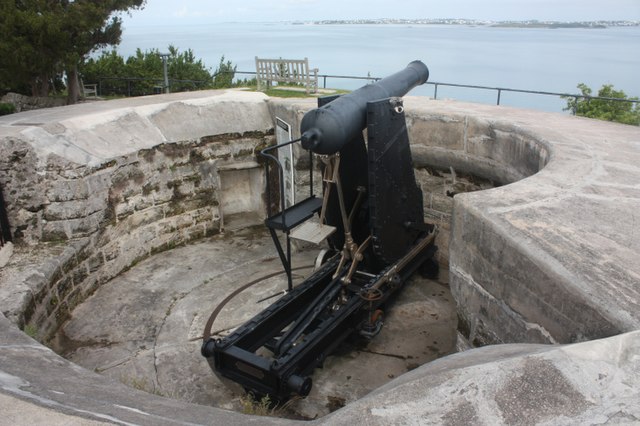The Royal Garrison Artillery (RGA) was formed in 1899 as a distinct arm of the British Army's Royal Regiment of Artillery serving alongside the other two arms of the Regiment, the Royal Field Artillery (RFA) and the Royal Horse Artillery (RHA). The RGA were the 'technical' branch of the Royal Artillery who were responsible for much of the professionalisation of technical gunnery that was to occur during the First World War. It was originally established to man the guns of the British Empire's forts and fortresses, including coastal artillery batteries, the heavy gun batteries attached to each infantry division and the guns of the siege artillery. The RGA was amalgamated with the RFA in 1924, from which time the only two arms within the Royal Regiment of Artillery have been the Royal Artillery and the Royal Horse Artillery.
Royal Garrison Artillery
The defunct St. David's Battery, St. David's, Bermuda in 2011, historically manned by the RGA and the part-time reserve Bermuda Militia Artillery.
Royal Garrison Artillery training on various types of Coast Artillery equipment at the Royal Citadel, Plymouth, c1905
St. David's Battery, Bermuda, completed in 1910, with two 9.2" and two 6" guns
The Royal Regiment of Artillery, commonly referred to as the Royal Artillery (RA) and colloquially known as "The Gunners", is one of two regiments that make up the artillery arm of the British Army. The Royal Regiment of Artillery comprises thirteen Regular Army regiments, the King's Troop Royal Horse Artillery and five Army Reserve regiments.
The Royal Arsenal and the Royal Military Academy, c. 1770
Royal Artillery troops attacking French cavalry in 1813
Royal Artillery Officers uniform, 1825
64 Pounder Rifled Muzzle-Loader (RML) gun on Moncrieff disappearing mount, at Scaur Hill Fort, Bermuda








